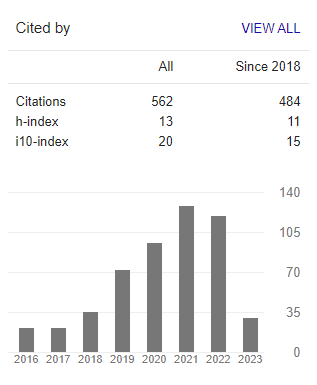PESAN ANTIPERUNDUNGAN DALAM IKLAN KOMERSIAL: Kasus iklan Burger King versi “Bullying Jr.”
Abstract
This study describes the identification of anti-bullying message and the construction of social reality in Burger King ad version “Bullying Jr.” through semiotics analysis on signs. Semiotics theory used in this study is focusing on Roland Barthes perspective. The analysis shows that majority of society tends to be antipathy towards bullying that happens around them. The message included in this advertisement is for the society to be braver to fight bullying around them.
To cite this article (7th APA style):
Maulianza, M. & Galib, S. (2018). Pesan Antiperundungan dalam Iklan Komersial: Kasus Iklan Burger King versi “Bullying Jr.”[Anti-Bullying Message in Commercial Ads]. Journal Communication Spectrum, 8(2), 113-132. http://dx.doi.org/10.36782/jcs.v8i2.1850
Keywords
References
Bogdan, R., & Taylor, S. (1992). Pengantar Metode Kualitatif. Usaha Nasional.
Boyd, A. (2001). Broadcast Journalism Techniques of Radio and Television News, Fifth Edition. Focal Press.
Budiman, K. (2003). Semiotika Visual. Penerbit Buku Baik.
Bungin, B. (2009). Sosiologi Komunikasi: Teori, Paradigma dan Diskursus Teknologi Komunikasi di Masyarakat. Kencana Prenada
Fiske, J. (2007). Cultural and Communication Studies: Sebuah Pengantar Paling Komprehensif. Jalasutra.
Harris, S. & Petrie. (2003). Bullying (the bullies, the victims, the bystanders). The Scarecrow Press.
Hidayat, D. N. (2009). Pengantar Komunikasi Massa. Rajawali Pers
Hidayati, N. (2012). Bullying pada Anak: Analisis dan Alternatif Solusi. Insan, 14(1), 42.
Hoed, B. H. (2008). Semiotik dan Dinamika Sosial Budaya. Komunitas Bambu.
Huraerah, A. (2012). Kekerasan Terhadap Anak. Nuansa.
KPAI (2016, 8 Januari). http://www.kpai.go.id
Kriyantono, R. (2008). Teknik Praktis Riset Komunikasi. Gramedia Pustaka Utama.
Lee, M. D. (2007). Prinsip-Prinsip Periklanan Dalam Perspektif Global. (penerj. H. Munandar, & D. Priatna) Kencana Prenada Media.
Limo, S. (2015). Bullying Among Teenagers and Its Effects. Tesis. Turku University of Applied Sciences, Turku, Finlandia.
Littlejohn, S. W. (2009). Teori Komunikasi. Salemba Humanika.
Maliki, A. E., Asagwara, C. G., & Ibu, J. E. (2009). Bullying problems among school children. Journal Hum Ecol, 25(3), 209-213.
McQuail, D. (2011). Teori Komunikasi Massa Edisi 6 Buku 1. Salemba Humanika.
Nisa, N. K. (2015). Strategi Kreatif Iklan Layanan Masyarakat (ILM) dalam Pemasaran Sosial. Jurnal Interaksi, 4(2), 158-164.
Olweus, D. (1993). Bullying at School: What We Know and What We Can Do. Blackwell Publishing.
Sobur, A. (2003). Semiotika Komunikasi. Rosdakarya
Sullivan, D. (2011). The Anti-Bullying Handbook. Sage Publications
Stokes, J. (2003). How To Do Media and Cultural Studies: Panduan Untuk Melaksanakan Penelitian dalam Kajian Media dan Budaya. Bentang
Taqiyya, H. (2011). Analisis Semiotik Film In The Name Of God. Skripsi. Universitas Islam Negeri, Jakarta
Vera, N. (2014). Semiotika dalam Riset Komunikasi. Ghalia Indonesia.
Wijaya, B. S. (2012). The Development of Hierarchy of Effects Model in Advertising. International Research Journal of Business Studies, 5(1), 73-82
Yan, S. & Ming, F. (2015). Reinterpreting Some Key Concepts in Barthes’ Theory. Journal of Media Communication Studies, 17(3), 60-65
Yuliastuti, M. & Nugraheni, Y. (2013). Sikap Orangtua dan Remaja Surabaya mengenai Pencitraan Keluarga dalam Tayangan Iklan di Televisi. Journal Communication Spectrum, 3(2), 192-210
Refbacks
- There are currently no refbacks.

This work is licensed under a Creative Commons Attribution 3.0 License.
Indexed by:
Archived in:
Listed in:
INTERNATIONAL ASSOCIATION FOR MEDIA AND COMMUNICATION RESEARCH

















